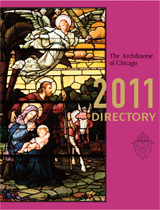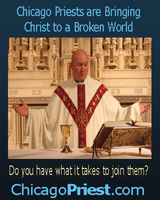Men behind ND’s Four Horsemen
revealed in book
A regular feature of The Catholic New World, The InterVIEW is an in-depth conversation with a person whose words, actions or ideas affect today's Catholic. It may be affirming of faith or confrontational. But it will always be stimulating.
The Four Horsemen of Notre Dame captured national attention and entered college football history in 1924 under the guidance of the famed Coach Knute Rockne. Now, journalist and sports historian Jim Lefebvre tells the story of these four men and that momentous season in “Loyal Sons: The Story of the Four Horsemen and Notre Dame Football’s 1924 Champions” ($24.95, Acta Sports).
He spoke with editor Joyce Duriga about this unique team.
Catholic New World: Much has been written about the Four Horseman and this legendary team. Why is your book necessary?
Jim Lefebvre: I was quite surprised to find out that, for all the fame of the 1924 Notre Dame team, there had never been a book-length treatment of their story. Where were the players from? How did they get to Notre Dame? How did the entire season go, not just the famous ND-Army game at the Polo Grounds in New York?
Nobody had done the research and put together the whole story — and it’s a fascinating one.
“Loyal Sons” tells the story of the entire team and the entire season, put into a context of the culture and history of the time. And the 1920s were an amazing period of rapid change and expanding possibilities. You can argue that 1924 is the season in which college football became a national game.
This ND team was the first to play games in New York City, Chicago and southern California in the same season, and the new technology of radio sent games into millions of homes.
CNW: These men played during a time of great anti-Catholicism in this country. How did the team help Catholic Americans feel they belonged?
Lefebvre: To think about the fact that nearly 40 percent of white males in Indiana in 1924 belonged to the Ku Klux Klan is staggering. And in the spring of 1924, the Klan stages a major demonstration in downtown South Bend, at the foot of American Catholicism, and the ensuing engagement is used by Klan propagandists to paint Catholics, especially at Notre Dame, as good-for-nothings. American Catholics were in need of a symbol that showed they were respectable, contributing citizens.
Father John O’Hara, prefect of religion at ND, saw the big picture, and envisioned how this particular football team — comprised largely of seniors, who were excellent students, played by the rules and were impressive representatives of the school — could play a role larger than football.
O’Hara’s brainchild was the three-week odyssey to and from the 1925 Rose Bowl, when the Irish were feted at events in each city, with alumni, Knights of Columbus and local Catholics coming out in droves to see Rockne’s “Wonder Team.”
CNW: How did the 1924 season change Notre Dame football into an event to experience, not just a game to attend?
Lefebvre: Because of the relatively small size of Cartier Field (23,000 seats at its largest), Notre Dame had a hard time attracting big-name schools to play them at home. It was a huge deal when Georgia Tech, a major Southern power, came to South Bend for Homecoming 1924. Especially because of the less-than-hospitable reception ND got in its previous trips to Atlanta, all of South Bend went all-out to warmly greet their visitors. The Tech team got off the train and was ferried by autos directly to the Notre Dame pep rally at the gymnasium — to wild cheering from the ND students. For the visiting team.
Then, two weeks later, Nebraska came to town in the biggest game ever played at South Bend. And the town again rolled out the red carpet for visitors from all over the Midwest.
CNW: Knute Rockne understood the value of publicity. How did he use it to the team’s best advantage?
Lefebvre: Rockne was a visionary in so many areas, including publicity. Long before schools had sports information staffs, he hired a student assistant each season and made him the official source of information on the team. The student would write for the South Bend papers and send dispatches to out-of-town papers.
A large part of the impetus to move the Army game to New York City in 1923 was Rockne’s relationships with major newspapermen of the day. And he was a columnist himself, with a nationally syndicated column that he largely wrote himself. Whether it was pre-season analysis or All-American teams, Rockne was as effective a promoter as the game had.
CNW: Who was George Strickler?
Lefebvre: George Strickler was the student publicity man in 1924, as a sophomore. His dad worked in the university farms. And, as he would later tell it, it was his mention of the “Four Horsemen,” having just seen the Rudolph Valentino silent film, with several of the players on campus before heading out to the Army game, that triggered Grantland Rice’s famous use of the term on Oct. 18, 1924.
Strickler then set up the most famous publicity photo in American sports history — and certainly one of its icons — when he posed the four backs on four work horses. Strickler went on to become long-time sports editor of the Chicago Tribune.




